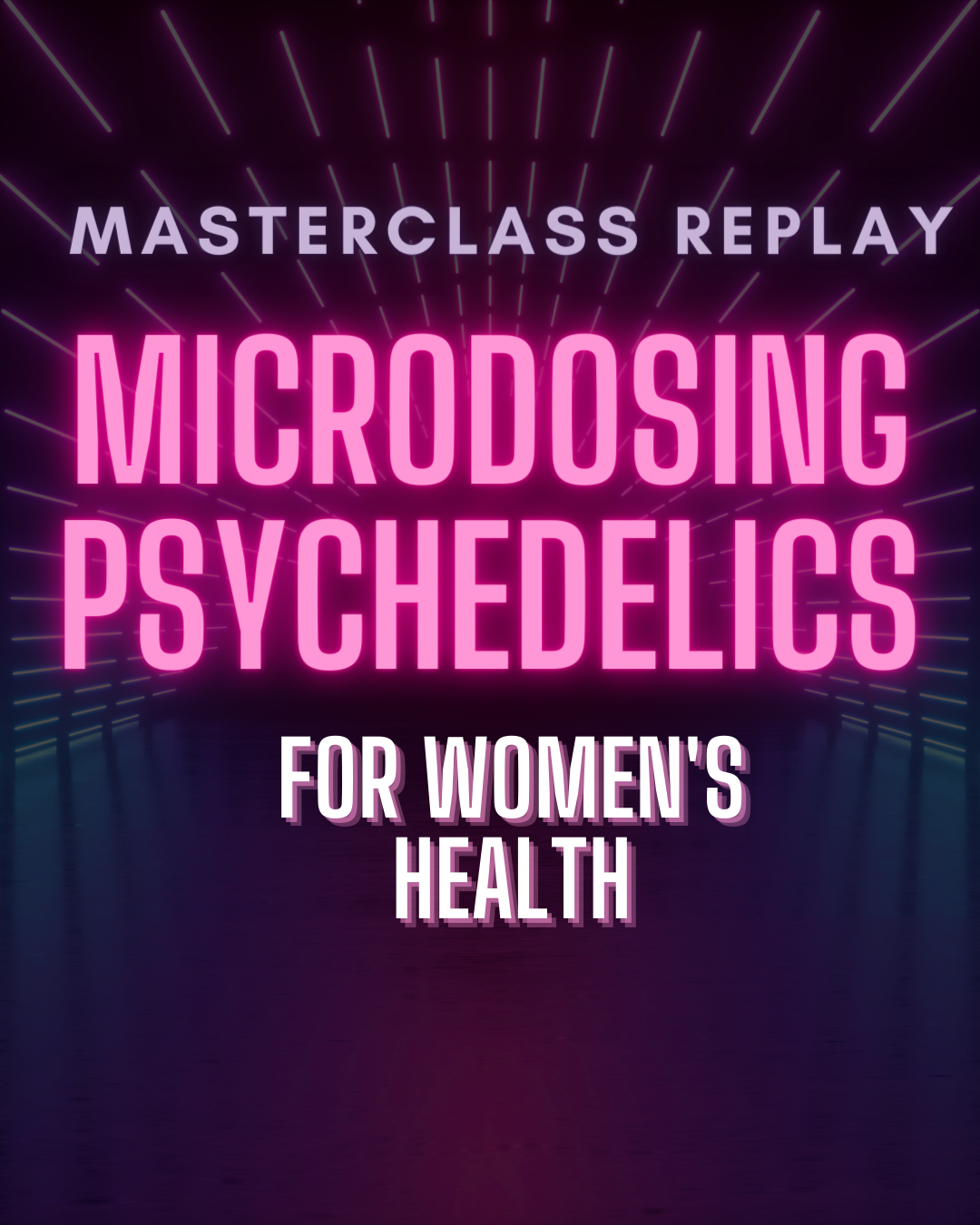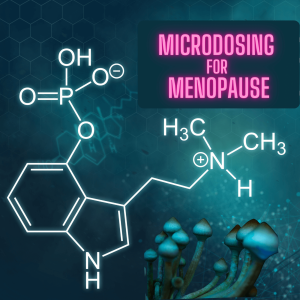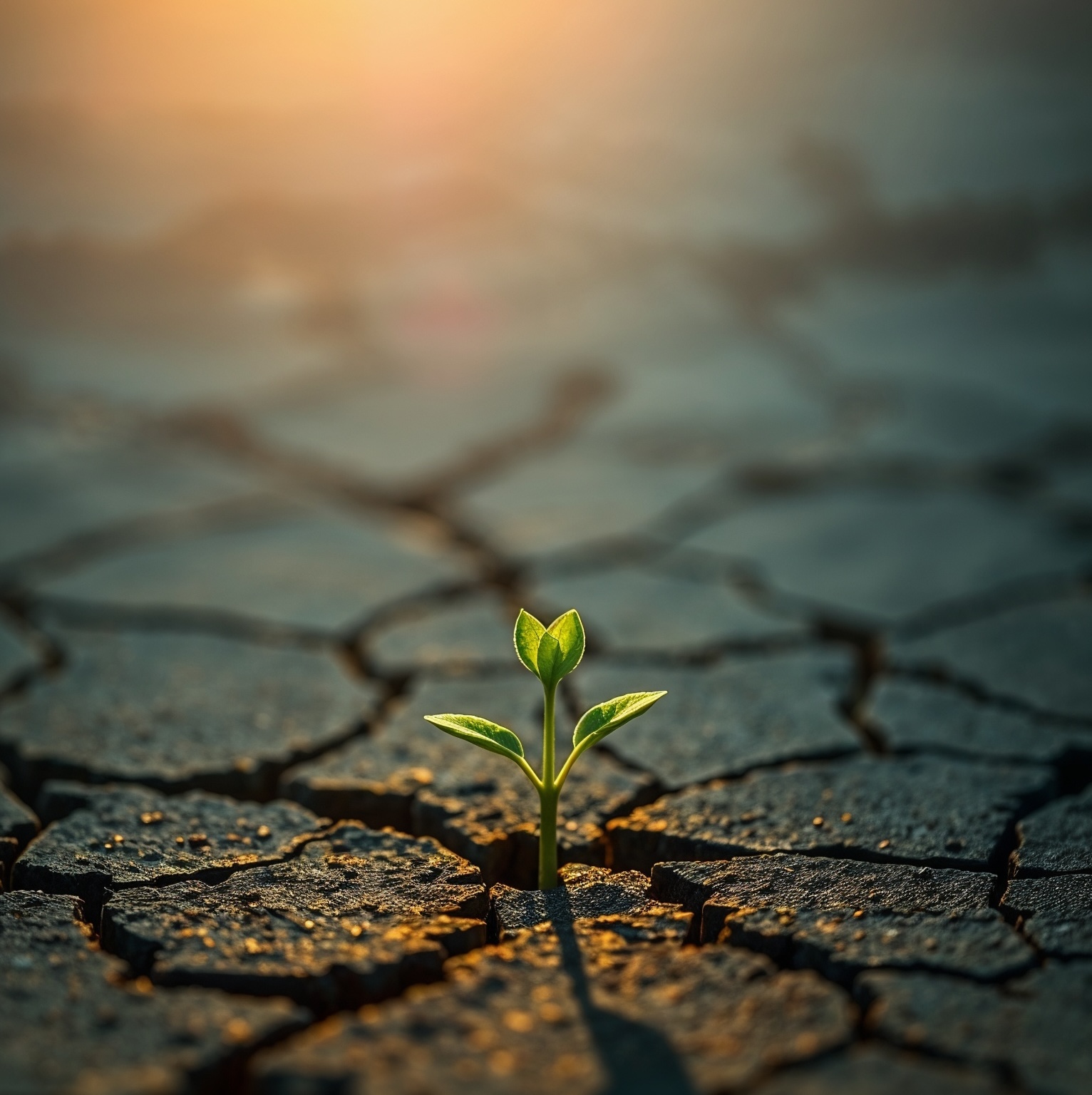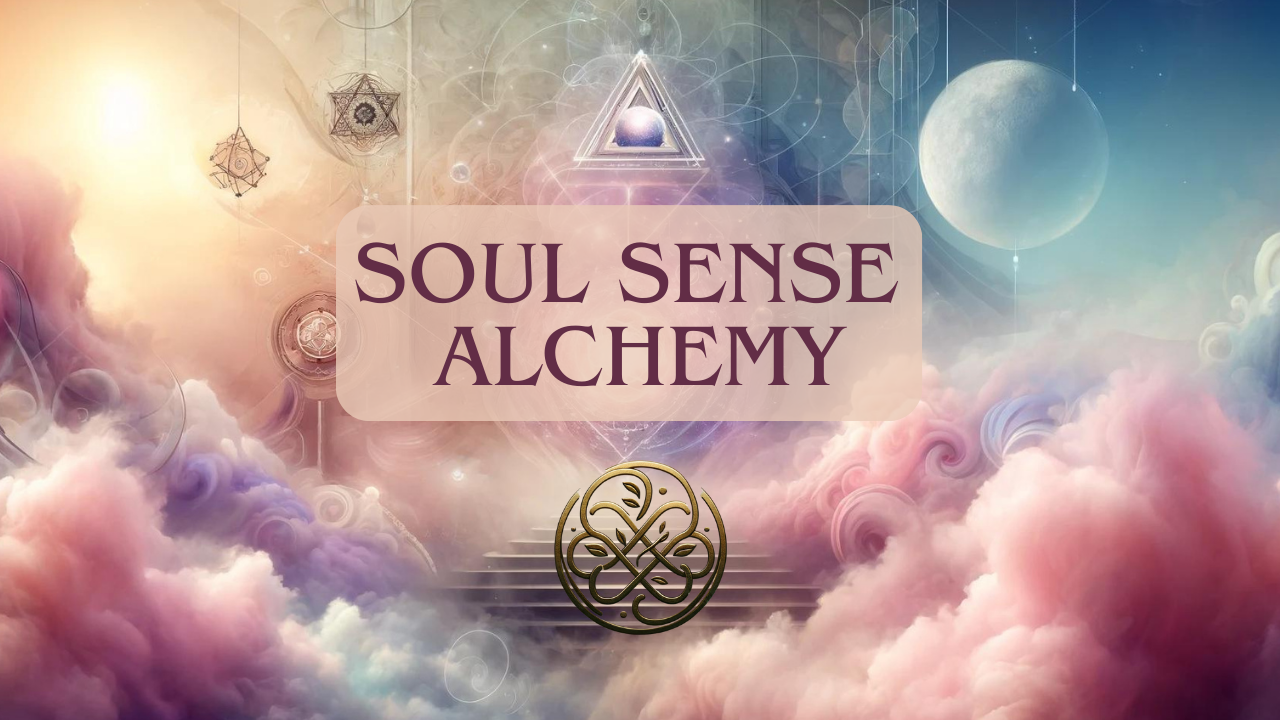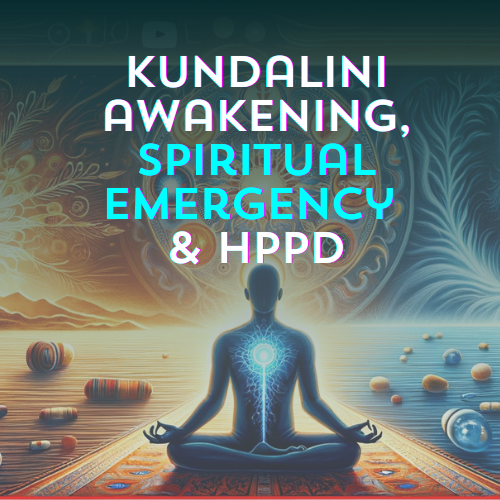Masterclass Series Replay (part 1)
Microdosing for Women’s Health: Unlocking the Power of Psychedelics
Over the past few years, there has been a significant increase in interest surrounding the use of microdosing psychedelics as a promising approach to enhance well-being and address various health issues. Women’s health, in particular, has become a focal point in this conversation, as microdosing may offer unique benefits for the specific challenges faced by women. Today, we will explore the potential of microdosing psychedelics as a powerful tool to improve women’s health and overall quality of life.
There is not extensive research on the safety or effectiveness of microdosing psychedelics. This information is provided for educational and research purposes only. I do not condone the use or sale of illegal substances.
Covered in today’s session:
The Scope of Women’s Health Issues
Menstrual health issues, menopause, and other unique challenges significantly impact women’s lives worldwide. The following statistics highlight the prevalence and far-reaching effects of these health concerns:
Menstrual Health:
– Approximately 80% of women experience some form of menstrual discomfort during their reproductive years, with symptoms ranging from mild to severe
– Around 20-25% of women suffer from moderate to severe dysmenorrhea (painful periods) that can interfere with daily activities
– Premenstrual syndrome (PMS) affects up to 75% of menstruating women, with 3-8% experiencing the more severe form, premenstrual dysphoric disorder (PMDD)
Menopause:
– Menopause typically occurs between the ages of 45 and 55, with the average age being 51 in the United States
– Approximately 75% of menopausal women experience hot flashes, with 20-30% finding them severe enough to seek medical treatment
– Around 40% of women in their 40s and 50s report experiencing mood swings, anxiety, and depression during the menopausal transition
To learn about microdosing specifically for menopause, check out the video here.
Other Hormone-Related Conditions:
– Hormonal imbalances, such as polycystic ovary syndrome (PCOS), affect around 5-10% of women of reproductive age, leading to a range of health issues like irregular periods, acne, and infertility
– Endometriosis, a painful disorder in which tissue similar to the lining of the uterus grows outside the uterus, affects approximately 1 in 10 women of reproductive age
– An estimated 20% of women experience chronic pain, with conditions like fibromyalgia and migraines disproportionately affecting women compared to men
An Overview Glimpse into Microdosing
What is Microdosing?
Microdosing involves taking a fraction of a typical recreational dose of a psychedelic substance, which is small enough not to cause any hallucinogenic effects, but still provides potential benefits for mental and physical well-being. It’s more about perceiving positive changes in mood, creativity, and focus.
Popular Psychedelics for Microdosing:
– Psilocybin Mushrooms: Enhances creativity, mood, and focus.
– LSD: Known to improve problem-solving, energy levels, and emotional stability.
– Mescaline: Increases empathy, heightens sensory perception, and general wellbeing.
– Ketamine: Not a traditional psychedelic but noted for increasing energy, improving mood, and reducing anxiety.
1. Microdosing Psilocybin:
Derived from “magic mushrooms,” psilocybin is a naturally occurring psychedelic compound. A typical microdose of psilocybin ranges from 0.1 to 0.3 grams of dried mushrooms or 5 to 10 milligrams of pure psilocybin. Users report improved mood, enhanced creativity, and increased focus with microdosing psilocybin. (Fadiman & Korb, 2019; Stamets, 2017).
The Fadiman Protocol
– When it comes to frequency of administration, a common microdosing schedule involves taking the sub-hallucinogenic dose once every three days, also known as the “Fadiman protocol” (Fadiman & Korb, 2019). This schedule allows for a “dose day,” followed by two “off days” to minimize the risk of developing a tolerance or experiencing adverse effects.
– It is crucial to note that microdosing protocols may vary among individuals, as factors such as body weight, metabolism, and sensitivity to the substance can influence the optimal dose and frequency. Personalizing the microdosing regimen to one’s specific needs and circumstances, while adhering to safety guidelines, is essential for the best possible experience.
Stamets Microdosing Protocol
Paul Stamets, a renowned mycologist, has proposed a unique microdosing protocol that differs from the more traditional methods. His protocol recommends the following pattern:
- Frequency: Consume the microdose for 5 consecutive days followed by 2 days off.
- Duration: This cycle can be repeated as long as the individual finds it beneficial.
- Dose: A sub-perceptual amount, which doesn’t cause noticeable hallucinogenic effects.
The “Stamets Stack”
In addition to the microdosing protocol, Paul Stamets also introduced a combination of substances known as the “Stamets Stack”. This stack includes:
- Psilocybin Mushrooms: For neurogenesis and cognitive benefits.
- Lion’s Mane Mushrooms: Believed to support cognitive function and nerve regeneration.
- Niacin: A form of Vitamin B3, intended to help drive the neurogenic benefits of psilocybin and lion’s mane deeper into the nervous system.
The exact dosages within the stack can vary based on individual preferences and sensitivities. It’s always recommended to consult with a professional before starting any new regimen.
And if you find that after 1 or 2 days you’ve taken too much, back down on the dose! You don’t have to go through an entire 30-day cycle before adjusting the dose. Some people feel edgy, irritable or anxious if the microdose is too high. Before you totally abandon it, make tweaks and journal about your reactions.
2. LSD (Lysergic acid diethylamide):
LSD is a synthetic psychedelic substance known for its potent hallucinogenic effects. In a microdose, LSD is typically taken in a range of 5 to 20 micrograms, which is about 1/10th to 1/20th of a full recreational dose. Microdosing LSD is said to enhance problem-solving abilities, increase energy levels, and promote emotional stability.
3. Mescaline:
Mescaline is a naturally occurring psychedelic compound found in certain cactus species, such as the peyote and San Pedro cacti. A microdose of mescaline usually ranges between 10 to 50 milligrams, which is significantly lower than the dose required for a full psychedelic experience. Users often report increased empathy, heightened sensory perception, and a greater sense of well-being when microdosing mescaline.
It is important to note that the optimal microdose amount can vary depending on individual factors such as body weight, metabolism, and sensitivity to the substance. It is crucial to start with a low dose and adjust according to personal response and tolerance. Always consult with a healthcare professional before experimenting with microdosing to ensure a safe and responsible experience.
4. Ketamine
Ketamine is a dissociative anesthetic that has been used medically for decades, primarily in surgery and veterinary medicine. Recently, it has gained attention for its potential in treating mental health disorders, particularly depression and anxiety. While ketamine is not a classical psychedelic like psilocybin or LSD, its use in low doses shares some similarities with microdosing psychedelics.
Ketamine is usually administered intravenously, intramuscularly, or as a nasal spray for medical purposes. In the context of microdosing, low doses of ketamine may be taken orally or sublingually (under the tongue) in the form of lozenges or tablets. A typical microdose of ketamine ranges from 10 to 30 milligrams, but this can vary depending on individual factors.
Users report that microdosing ketamine can lead to increased energy, improved mood, enhanced creativity, and reduced anxiety. However, it is crucial to note that ketamine has the potential for abuse and addiction, so it should be used cautiously and under the guidance of a healthcare professional.
It’s important to mention that the use of ketamine for mental health treatment has been studied more extensively in the context of supervised, clinical administration, rather than self-administered microdosing.
Potential Benefits of Microdosing for Women’s Health
It is crucial to note that microdosing psychedelics for menstrual health is still an emerging area of research, and more studies are needed to fully understand the potential benefits and risks involved. Always consult with a healthcare professional before considering microdosing psychedelics for menstrual health.
Microdosing psychedelics may potentially help alleviate some of these symptoms due to their effects on mood regulation, pain perception, and cognitive functioning. However, more research is needed to fully understand these benefits.
Mood Regulation:
Some studies suggest that microdosing can enhance mood and reduce anxiety (Fadiman & Korb, 2019; Johnstad, 2018). This may help women experiencing mood swings and irritability during their menstrual cycles.
Pain Perception:
Although research on the direct effects of microdosing on pain management is limited, anecdotal evidence and preliminary studies indicate that low doses of psychedelics may have analgesic properties, potentially reducing menstrual pain (Fadiman & Korb, 2019).
Combatting Cognitive Difficulties:
Women suffering from brain fog or cognitive issues during menstruation or menopause might benefit from enhanced creativity, focus, and problem-solving abilities offered by microdosing.
Microdosing has been reported to enhance creativity, focus, and problem-solving abilities (Fadiman & Korb, 2019; Johnstad, 2018). These cognitive enhancements may help women experiencing difficulties in concentration and mental clarity during their menstrual cycles.
Research Insights
Prochazkova’s Study on Creativity:
Found increased convergent and divergent thinking after microdosing, promoting creativity and problem-solving.
Prochazkova et al. (2018) conducted a study to explore the effect of microdosing psychedelics on creativity in an open-label natural setting. Participants who had planned to microdose with psychedelics completed a series of tests assessing their creative thinking, problem-solving abilities, and general cognitive function before and after microdosing. The results revealed that microdosing led to an increase in convergent and divergent thinking, which are key aspects of creativity. The study suggests that microdosing psychedelics could have potential benefits in enhancing creativity and problem-solving skills. However, it is important to note that the study was conducted in an open-label natural setting, which may introduce bias and limit the generalizability of the findings.
Fadiman and Korb’s Global Survey:
Highlighted improvements in mood, focus, creativity, and overall emotional wellbeing with minimal side effects.
This study by James Fadiman and Sophia Korb (2019) is an initial exploration of the safety and potential benefits of microdosing psychedelics. The researchers collected self-report data from microdosers worldwide and examined the effects of these substances on mood, cognition, and overall well-being. The study found that many participants reported improvements in mood, focus, creativity, and emotional well-being, with minimal negative side effects. However, the study also acknowledged the limitations of self-report data and the need for more rigorous, controlled research to validate these findings.
Johnstad’s Exploration:
Participants reported better mood, creativity, problem-solving abilities, and emotional processing.
Johnstad’s (2018) study is an interview-based exploration of the experiences of individuals who engage in psychedelic microdosing. The study aimed to understand the motivations, perceived benefits, and potential risks associated with microdosing. Participants reported a range of positive outcomes, including enhanced mood, increased creativity, improved problem-solving abilities, and better emotional processing. Some participants also reported potential drawbacks, such as increased anxiety or physiological discomfort. The study highlights the need for more controlled research to fully understand the effects and safety of microdosing psychedelics.
Delving into the Mechanisms
Serotonin Receptors:
Many psychedelics interact with serotonin receptors, particularly the 5-HT2A receptor. This interaction might explain mood elevation, reduced pain, and enhanced cognitive function.
– Many psychedelics, such as LSD and psilocybin, are known to interact with serotonin receptors, particularly the 5-HT2A receptor (Nichols, 2016).
– Serotonin is a neurotransmitter that plays a crucial role in mood regulation, pain perception, and cognitive functioning, which may partially explain the potential benefits of microdosing for women’s health (Carhart-Harris & Nutt, 2017).
Neuroplasticity:
Microdosing may promote the brain’s ability to adapt and reorganize neural pathways, though more research is required in this arena.
– Psychedelics have been shown to promote neuroplasticity – the brain’s ability to adapt and reorganize neural connections (Ly et al., 2018).
– This increased neural flexibility may contribute to the reported improvements in mood, cognition, and overall well-being associated with microdosing (Fadiman & Korb, 2019).
Brain connectivity:
– Research has demonstrated that psychedelics can temporarily alter the connectivity patterns within the brain, leading to increased communication between different brain regions (Carhart-Harris et al., 2016).
– These changes in connectivity may underlie the enhancements in creativity, problem-solving, and emotional processing reported by individuals who microdose psychedelics (Johnstad, 2018).
Anti-inflammatory effects:
– Emerging evidence suggests that some psychedelics may have anti-inflammatory properties (Szabo et al., 2014).
– Inflammation has been linked to mood disorders, pain, and cognitive decline, so these anti-inflammatory effects could potentially contribute to the benefits of microdosing for women’s health.
It is important to note that the exact mechanisms underlying the effects of microdosing psychedelics on women’s health are not yet fully understood, and more research is needed to explore these potential benefits and their underlying processes.
Hormonal regulation:
– While there is limited direct evidence on the effects of microdosing psychedelics on hormone regulation, the potential mood-enhancing and anxiolytic effects of microdosing could indirectly influence hormonal balance (Fadiman & Korb, 2019; Johnstad, 2018).
– Further research is needed to explore the relationship between microdosing and hormonal regulation in the context of women’s health.
Stress reduction:
– Some studies have suggested that microdosing may help reduce stress levels and improve emotional well-being (Fadiman & Korb, 2019; Johnstad, 2018).
– As stress is known to exacerbate many women’s health issues, including menstrual and menopausal symptoms, the potential stress-reducing effects of microdosing may be beneficial for women’s health.
Various mechanisms may underlie the potential benefits of microdosing psychedelics for women’s health, including interactions with serotonin receptors, promotion of neuroplasticity, alterations in brain connectivity, and anti-inflammatory effects. However, more research is needed to further elucidate these mechanisms and to confirm the potential benefits of microdosing psychedelics for women’s health.
Legal Status
Another essential point to consider is the legal status of psychedelics in your jurisdiction. While microdosing has gained popularity and is being studied for its therapeutic potential, it’s still illegal in many places. Possession, sale, and use of these substances can lead to criminal charges. Thus, you need to be aware of the local laws and regulations concerning psychedelics before considering them as an option.
Furthermore, sourcing is crucial. If you’re considering microdosing, it’s essential to ensure that you’re getting pure and safe substances. There have been reports of people accidentally obtaining and consuming substances that are more potent or harmful than what they thought they were getting. Always prioritize your safety above everything else.
Integration
Integration is the process of incorporating the insights and experiences from a psychedelic journey into one’s daily life. While microdosing might not offer the profound revelations that higher doses can, there still might be subtle shifts in perspective or behavior that you might want to integrate. This can be done through journaling, meditation, or discussions with a psychedelic integration therapist or coach.
Lastly, it’s important to remember that psychedelics are not a magic bullet. They can be powerful tools when used responsibly, but they’re not going to solve all of life’s challenges on their own. You should approach them as part of a holistic wellness strategy, incorporating mental, emotional, and physical health practices.
In conclusion, the potential of microdosing for women’s health is an exciting field of study. Early indications suggest that it can offer various benefits, from mood enhancement to pain relief. However, as with any emerging area of research, it’s essential to proceed with caution and stay informed about the latest findings. If you’re considering trying microdosing, ensure you’re making informed choices, consulting with professionals, and being mindful of the potential risks and benefits.
While microdosing presents a promising avenue for addressing women’s health issues, more controlled, and rigorous research is essential. As we continue to uncover the potential of these substances, it’s crucial to approach with curiosity, caution, and a commitment to understanding the full spectrum of effects.
For support on your microdosing journey, book a private consultation with Dr. 1Drea. Details are here. 👈🏼
